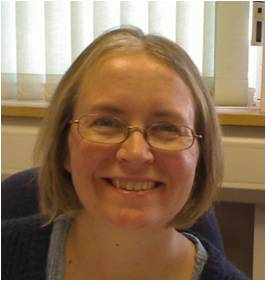Materials in Motion: Real time imaging of nanoparticle transformation and tribology by in-situ TEM
SEMINAR
The Key Lab of Inorganic Functional Materials and Devices
Shanghai Institute of Ceramics,
Chinese Academy of Sciences
中 国 科 学 院 上 海 硅 酸 盐 研 究 所 无 机 功 能 材 料 与 器 件 重 点 实 验 室
Materials in Motion: Real time imaging of nanoparticle transformation and tribology by in-situ TEM
(纳米材料、TEM原位表征)
Speaker
Prof. Beverley J. Inkson
NanoLAB Centre, Dept. of Materials Science and Engineering, The University of Sheffield, UK
时间:2015年5月15日(星期五),9:30~10:30
地点:上海硅酸盐研究所 四号楼14楼 第一会议室
联系人:李永祥 电话:52411066
Prof. Beverley Inkson
Dept. of Material Science and Engineering, University of Sheffield, UK
Prof. Inkson was educated at Cambridge University, with a first class degree in Physics/Natural Sciences, and a PhD in Materials Science. After a Research Fellowship at Cambridge she moved to the Max Planck Institute for Metals Research, Stuttgart, Germany as an Alexander von Humboldt Fellow. She returned to the UK to Oxford University with a prestigious Royal Society Research Fellowship to set up a group in Nanomechanics, and moved to Sheffield in 2003, where she was appointed Professor in 2011 and directs the Sheffield NanoLAB.
Prof. Inkson has extensive experience in the analysis of structural, mechanical and electrical properties of nanostructured materials using of electron and ion microscopy. She is particularly known for her development of 3D tomographic characterisation methods, and more recently developing novel in-situ measurement techniques to determine real-time dynamical behaviour of nanomaterials and nanoparticles under mechanical and electrical stimuli. This world-leading research has been partially supported by a £3million EPSRC Basic Technology Programme.
Abstract
Many technologies now use composites with hierarchical structures engineered down to the nanoscale. Nanoparticles, nanowires and nano-platelets are active components in many composites, including engineering alloys, battery electrodes, sensors and biomaterials. The successful integration of nanocomponents into larger micro-structures does not, however, guarantee long-term performance. The effect of long-term thermal, electrical and mechanical stimuli can cause significant change in nanomaterials structure and function.
In this talk we will examine how real-time imaging of nanoscale contacts inside electron microscopes, can be used to investigate the dynamics of material interactions and the evolution of nanostructures with time. The formation of nanoscale electrical circuits in-situ in SEM and TEM has enabled direct imaging of the time-dependant structural stability of a range of functional nanostructures including carbon nanotubes, particles and battery components. We demonstrate the use of a miniaturized TEM triboprobe which can apply long-term cyclic mechanical stresses at the nanoscale. This enables nanoscale fatigue testing of nanoparticles and nanowires to quantify their long-term mechanical stability. The use of the TEM Triboprobe will be illustrated by examples including phase transformations in carbon nanoparticles, mechanical fatigue of silicon, and quantification of nanoparticle motion between sliding surfaces.


 当前位置:
当前位置:

